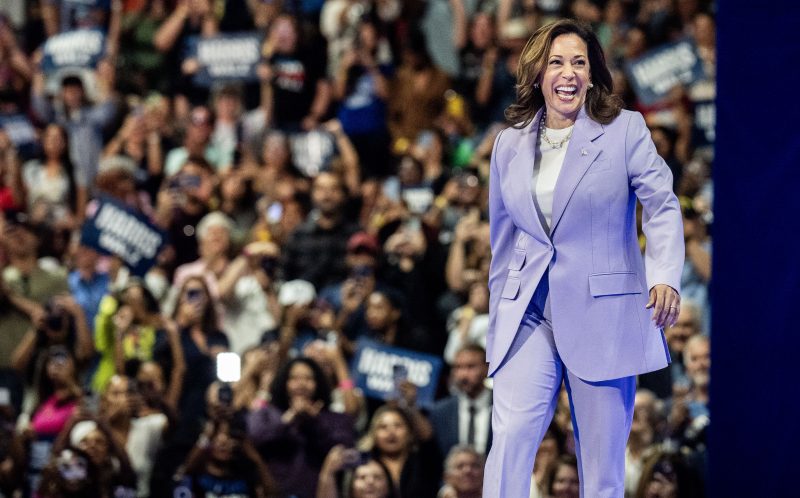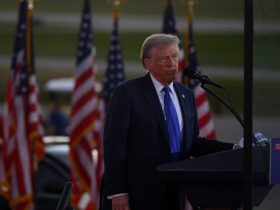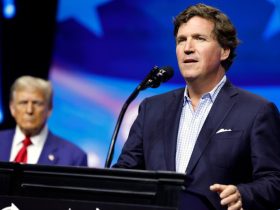The campaign of Vice President Kamala Harris announced Saturday that it will reserve at least $370 million in television and digital advertising between Labor Day and Election Day, a massive investment in the fall that roughly matches a similar investment by outside groups supporting her campaign.
The new Harris plan includes $170 million in traditional national and local television advertising, focused on reaching voters in the core battleground states, along with more than $200 million in digital advertising, much of which will be consumed through living-room televisions with streaming services such as Hulu, Roku and YouTube TV, the campaign said.
Quentin Fulks, the principal deputy campaign manager, who oversees the advertising efforts, said the spending has been designed to ensure that Harris is competitive in both northern and more-Southern states, such as Georgia and North Carolina, as well as Arizona.
“We have multiple pathways,” Fulks said. “We are making sure as we place these reservations, we don’t allow any of those doors to be shut.”
The campaign is continuing its focus on advertising during major television events and top-rated shows, with planned ad placements for the season premieres of “Grey’s Anatomy” and “The Golden Bachelorette,” as well as for professional football, hockey, basketball and baseball games. Other prime-viewing shows have also been targeted, including “Jeopardy!,” “Wheel of Fortune,” “Abbott Elementary” and “Survivor.” Fox News programming in the daytime, which is watched by targets of the Harris campaign, will also be purchased, the campaign said.
The reservations do not include traditional social media, search and some other types of digital advertising, said Rob Flaherty, the deputy campaign manager in charge of the digital efforts. Additional television and streaming reservations are also likely as the campaign progresses, depending on fundraising.
“This reflects a modern cross-media campaign,” Flaherty said. “We are going where we need to go, and that is more places than ever right now.”
Future Forward, an independent group supporting Harris, has reserved an additional $250 million after Labor Day to support her campaign. American Bridge to the 21st Century, another group backing Harris in Pennsylvania, Michigan and Wisconsin, has said it will spend about $100 million more before the election.
By making reservations early, political advertisers can often secure cheaper rates. Under federal law, campaigns benefit from more favorable rates than outside groups in the final weeks before an election.
When President Joe Biden was the presumptive nominee, the campaign spent $155 million on advertising, according to the tracking firm AdImpact. Harris has spent an additional $47 million between taking over the campaign and Friday. The campaign has also built out a large infrastructure in states that is aimed at reaching voters in other ways, with more than 1,600 paid staff and 280 offices.
Much of the early Biden advertising was focused on improving his favorability rating and researching how target voters get their information. Those lessons are now being applied Harris, who has different strengths and weaknesses than her former running mate, campaign officials said.
The Trump campaign, which has not yet announced a fall advertising plan, has spent only $47 million on ads through Friday, after declining to match Biden’s ad reservations in the spring and early summer.
Trump advisers say they will have enough money to fund a robust campaign, but they do not expect to match the spending by Harris and allied groups. Trump’s top advisers believe they can overcome that disadvantage because of the ability of Trump to attract free news coverage and social media posts.
MAGA Inc., an independent group supporting Trump, announced a $100 million ad campaign from early August to Labor Day but has not yet previewed its fall spending. Other outside groups backing Trump are expected to announce additional reservations in the coming weeks.
The switch from Biden to Harris has also changed the mix of advertising for the Democratic campaign, with more focus on introducing Harris and her agenda than Biden would have needed at this point in the campaign.
“Once we feel we have introduced the vice president to America and her record of fighting for the American people, it is also about the future,” Fulks said of the ad themes. “We have got to do all those things, and we have to do it very well. But I think the campaign has laid out a very sophisticated strategy.”










